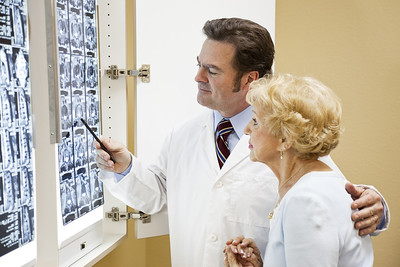Rediscovering a language of healing that doesn’t require ‘cure’
By Lee D. Cooper,
STAT News
| 03. 02. 2022
"Doctor Patient and Xray" by andyde is marked with CC BY-NC 2.0.
I am a biotech investor and entrepreneur. But more central to my worldview is that I am someone who lives with a rare genetic disease. This has sensitized me to the flippant ways that excited scientists and entrepreneurs toss around notions of “cures,” especially when genomic manipulation is involved.
No matter what work is in front of me, I see it through the lens of life with a disease-causing typo in the six billion DNA letters that make up the story of my genome. I have a C (for cytosine) where there should be G (for guanine), an error that sits within a gene that is essential for building the heart’s electrical current. Such a defect can lead to potentially lethal irregularities in my heart’s rhythm. The condition is called long QT syndrome.
A few months ago, I felt all sorts of emotions welling up when I came upon an article in a top journal announcing a new gene-editing method for correcting an erroneous G...
Related Articles
By Jonathan Matthews, GMWatch | 12.11.2025
In our first article in this series, we investigated the dark PR tactics that have accompanied Colossal Bioscience’s de-extinction disinformation campaign, in which transgenic cloned grey wolves have been showcased to the world as resurrected dire wolves – a...
By Jenny Lange, BioNews | 12.01.2025
A UK toddler with a rare genetic condition was the first person to receive a new gene therapy that appears to halt disease progression.
Oliver, now three years old, has Hunter syndrome, an inherited genetic disorder that leads to physical...
By Simar Bajaj, The New York Times | 11.27.2025
A common cold was enough to kill Cora Oakley.
Born in Morristown, N.J., with virtually no immune system, Cora was diagnosed with severe combined immunodeficiency, a rare genetic condition that leaves the body without key white blood cells.
It’s better...
By Rachel Hall, The Guardian | 11.30.2025
Couples are needlessly going through IVF because male infertility is under-researched, with the NHS too often failing to diagnose treatable causes, leading experts have said.
Poor understanding among GPs and a lack of specialists and NHS testing means male infertility...




